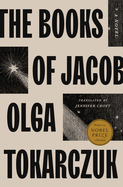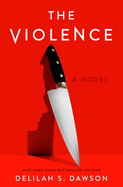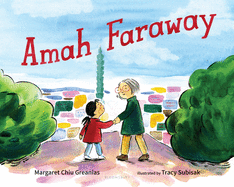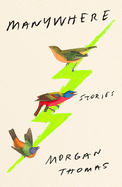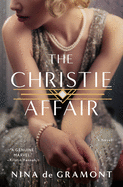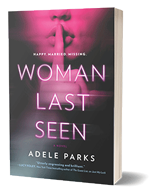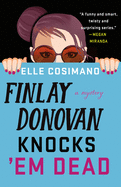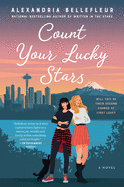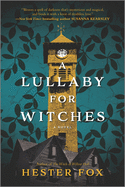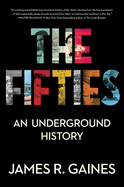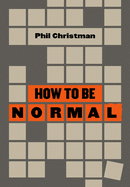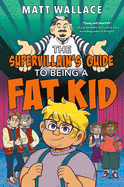Tuesday, February 1, 2022
"I love/ I love a lot of things, a whole lot of things/ Like/ My cousin comes to visit and you know he's from the South/ 'Cause every word he says just kind of slides out of his mouth/..."
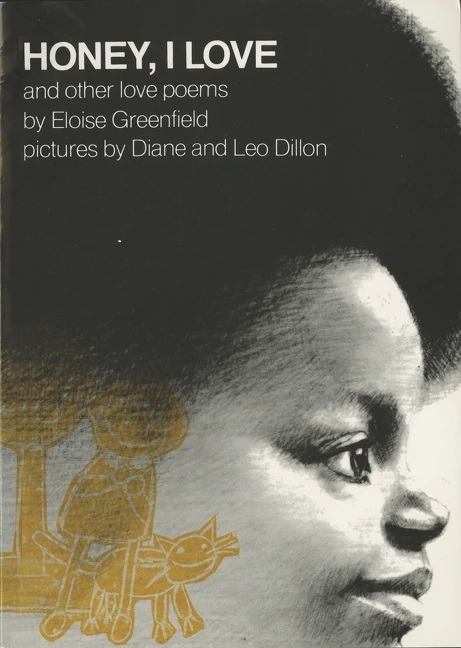 These are the lines of poetry Jason Reynolds read aloud at the ceremony when author and poet Eloise Greenfield won the 2018 Coretta Scott King-Virginia Hamilton Award for Lifetime Achievement; it was part of his acceptance of a CSK Honor for his own Long Way Down (Atheneum, $11.99). Reynolds said he always keeps 10 copies on hand of Greenfield's Honey, I Love and Other Love Poems (HarperCollins, $7.99)--the lines he cited come from its title poem--to give to others. Greenfield died last year at age 92, and her body of work and her willingness to stand up to injustice wherever she found it leave us a lasting legacy.
These are the lines of poetry Jason Reynolds read aloud at the ceremony when author and poet Eloise Greenfield won the 2018 Coretta Scott King-Virginia Hamilton Award for Lifetime Achievement; it was part of his acceptance of a CSK Honor for his own Long Way Down (Atheneum, $11.99). Reynolds said he always keeps 10 copies on hand of Greenfield's Honey, I Love and Other Love Poems (HarperCollins, $7.99)--the lines he cited come from its title poem--to give to others. Greenfield died last year at age 92, and her body of work and her willingness to stand up to injustice wherever she found it leave us a lasting legacy.
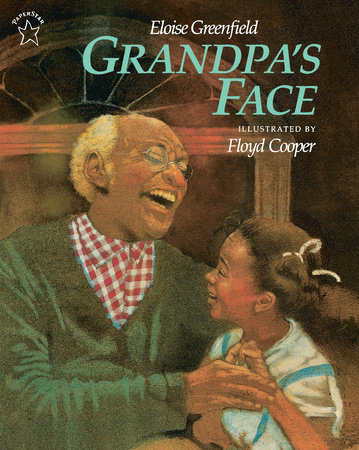 Greenfield also wrote the text for Grandpa's Face (Puffin, $7.99), Floyd Cooper's first illustrated children's book. Cooper, too, died last year, at age 65. Born and raised in Tulsa, Okla., he dedicated his life and work to depicting the faces and touchstones of the Black experience. Cooper's final picture book,
Greenfield also wrote the text for Grandpa's Face (Puffin, $7.99), Floyd Cooper's first illustrated children's book. Cooper, too, died last year, at age 65. Born and raised in Tulsa, Okla., he dedicated his life and work to depicting the faces and touchstones of the Black experience. Cooper's final picture book, 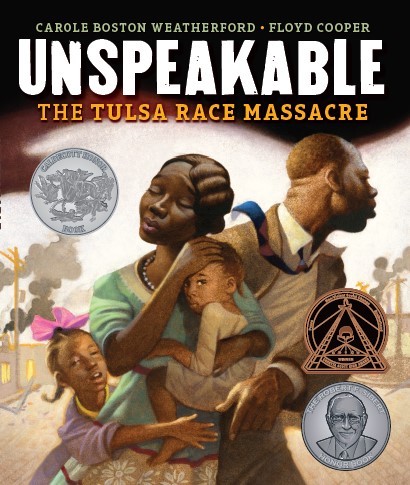 Unspeakable: The Tulsa Race Massacre (Carolrhoda, 2021), written by Carole Boston Weatherford, chronicles the devastation that occurred in 1921 when a white mob attacked the Black community in Tulsa's Greenwood district, and it was an opportunity for him to connect with his maternal grandfather, who narrowly escaped the massacre, as Cooper wrote in his illustrator's note. Last week, it won the 2022 CSK Author and Illustrator Award as well as a Caldecott Honor. Cooper was a truth-teller, in words and in his artwork, and will serve as a model for those who follow him. --Jennifer M. Brown, senior editor, Shelf Awareness
Unspeakable: The Tulsa Race Massacre (Carolrhoda, 2021), written by Carole Boston Weatherford, chronicles the devastation that occurred in 1921 when a white mob attacked the Black community in Tulsa's Greenwood district, and it was an opportunity for him to connect with his maternal grandfather, who narrowly escaped the massacre, as Cooper wrote in his illustrator's note. Last week, it won the 2022 CSK Author and Illustrator Award as well as a Caldecott Honor. Cooper was a truth-teller, in words and in his artwork, and will serve as a model for those who follow him. --Jennifer M. Brown, senior editor, Shelf Awareness
The Books of Jacob
by Olga Tokarczuk, transl. by Jennifer Croft
Of all the messianic leaders in world history, Jacob Frank--the subject of The Books of Jacob by 2018 Nobel Laureate Olga Tokarczuk (Drive Your Plow over the Bones of the Dead)--is one that contemporary readers are unlikely to know. Published in Polish in 2014 and now available in an English translation by Jennifer Croft, this magnificent novel, which spans three decades of the 18th century and coincides with the life of a "young man named Mozart," is Tokarczuk's fictional account of Frank, who claimed to be the Messiah. Like all charmers, Frank attracted acolytes and enemies. He converted to Islam and then Catholicism, counseling followers to do the same: "You have to go into the darkness... salvation awaits us only in darkness."
At more than 900 pages, the novel contains dozens of beautifully drawn characters. Paramount among them, aside from Frank himself, are Yente--a frail woman who "didn't exactly die" during a wedding at the novel's start, yet who, in one of many surreal touches, hovers between life and the next world, witness to the narrative proceedings--and Moliwda, a Polish count and polyglot attracted to Judaism and to Frank, the latter in more ways than one. Tokarczuk addresses themes of racism--a bishop incensed by Jewish materiality wants to "get rid of the Jews"--and the dangers of following a charismatic leader. The Swedish Academy singled out this work in Tokarczuk's Nobel citation and, thanks to this sterling translation, English-language readers will discover why. --Michael Magras, freelance book reviewer
Discover: A magisterial novel about an enigmatic Polish religious leader, written by one of the world's most celebrated authors.
Manywhere
by Morgan Thomas
Morgan Thomas's profound debut, Manywhere, is partly dedicated to "anyone who's gone looking for themself in the archives." In nine remarkable stories, Thomas adamantly and sublimely commits four centuries of the genderqueer/trans existence to the page. In "The Daring Life of Philippa Cook the Rogue," a contemporary Jamestown reenactor plans to purchase a colonial intersex servant's letters. Thomas brilliantly shuttles readers between the 17th and 21st centuries, inspired by real-life Thomas/ine Hall's 1629 court transcripts that evoke the former century and 2018 e-mails that present the latter. In "Taylor Johnson's Lightning Man," Thomas integrates 1908 newspaper coverage of Frank Woodhull, an immigrant born Mary Johnson who arrives at Ellis Island, with a teen's examination of trans identity. The name in this story's title (perhaps coincidentally) also belongs to award-winning trans poet Taylor Johnson. Thomas once again overlaps past and present in "The Expectation of Cooper Hill," conflating late-1920s Alabama midwifery with a woman's attempt to understand the disappearance of her great-great-grandmother.
In addition to their talents with historical adaptation, Thomas excels in displays of surprising (re)invention. In "That Drowning Place," one sibling assumes the identity of another after a fatal accident. In "Transit," an expelled patient from an eating disorder facility convinces a stranger that they are a vampire. In "Bump," a trans woman, whose married lover has abruptly entered fatherhood, dons a pregnancy prosthesis after a colleague's incorrect assumption. In the poignant "Manywhere," the collection's most bittersweet story, the protagonist lures a stranger home for their aging father, who longs for his imagined daughter.
Though this is Thomas's debut collection, eight of these nine stories were previously published in multiple outlets. Theirs is an unpredictable perspective, ready to illuminate and beguile readers. --Terry Hong, Smithsonian BookDragon
Discover: Morgan Thomas's absorbing collection of nine stories promises a surprising, often ingenious, exploration of the genderqueer/trans experience in recent centuries.
The Christie Affair
by Nina De Gramont
The Christie Affair by Nina de Gramont is an ingeniously plotted historical mystery in the style of an engrossing Agatha Christie thriller--except the character at the center of the mystery is the beloved lady novelist herself. Bringing to glorious life the more intimate roles Christie played, including as a mother, wife, loyal friend and passionate lover, de Gramont's graceful novel will enthrall Christie fans of all persuasions.
The story is set in 1920s England, during the early days of Agatha's rise to literary fame and the implosion of her marriage to Archie Christie. In real life, Agatha's devastation over her husband's demand for a divorce led her to flee her Berkshire home and disappear for 11 days; no one knows where she went, and she took that secret to her grave. Here, de Gramont (The Last September) offers a skillful reimagining of what transpired when Agatha vanished in the dead of night with her typewriter, setting off a media-driven scandal and a country-wide police manhunt. The result is a particularly gripping story, brilliantly embellished by the enigmatic narrator, Nan O'Dea, who also happens to be Archie's mistress.
Although Agatha is at the heart of Nan's narrative, The Christie Affair is a story of two women from vastly different backgrounds struggling to control their own destinies. An accomplished author, de Gramont takes a page from the great mystery writer herself and makes swift work of tying up loose ends as the story reaches its boiling point, leaving readers marvelously entertained and breathlessly connecting the dots. --Shahina Piyarali, reviewer
Discover: This gorgeously written mystery reimagines Agatha Christie's real-life disappearance after the collapse of her marriage and the intriguing story of the woman responsible for the breakup.
Woman Last Seen
by Adele Parks
London, England. Two women, the same age. Both married. Both gone missing on the same day at the same time. The mind-blowing reason behind these similarities delivers emotional whiplash in Adele Parks's heart-pumping psychological thriller Woman Last Seen.
Somewhere, an unnamed woman awakens, chained to a radiator in an unfurnished room. Her screams for help are answered by "the distinct sound of the keystrokes of an old-fashioned typewriter being pounded. A sort of shuffling rat-tat-tat. Slow, precise. Like a hostile countdown." Then a sheet of paper is ripped from the carriage, and the typed message is shoved under the door: "I am not the villain here." Who is this woman, and who is her kidnapper?
Leigh and Mark Fletcher have been married for 10 years and enjoy a happy, working-class life raising their two teenage kids, Oli and Seb. Mark is a local landscaper and Leigh works as a business consultant. Her job takes her out of town every week from Monday morning to late Wednesday night. When Leigh doesn't show up on a Thursday, and Mark's repeated calls and texts to her go unanswered, he calls the police to report his wife missing, informing them that he and Leigh speak on the phone every day, regardless of her travel schedule.
The officers assigned to the case, Detective Constable Clements and Constable Tanner, ask if Mark checked in with Leigh's office. But Mark doesn't have the number or the name of the company; he only ever rings her cell phone. He has reached out to Leigh's close friend Fiona, but Fiona has no idea where Leigh might be. Mark admits that a quarrel with his wife the night before she left for work led to his sleeping on the couch, but swears it was the type of silly row common to most married couples. After getting a photo of Leigh, Clements and Tanner set out to investigate her disappearance, though with a grim feeling they might be searching for a body.
Back at the police station, Thursday appears to have become the day for missing wives--Clements catches a similar case: a man named Daan Janssen, who lives in an affluent neighborhood a few miles from the Fletchers, has reported his wife, Kai, missing. Leaving Tanner to work on the Fletcher case, Clements heads out to interview Janssen.
Kai Janssen makes regular, extended weekly visits to her ailing mother from Monday through Wednesday. Daan last saw his wife a week ago and last spoke with her three days after that. Daan tells Clements he thinks someone has Kai's phone and is pretending to be her via text. His calls to Kai have gone unanswered; they usually check in with each other daily when she's away. He did receive a clipped text from her: "Can't come home right now." Fearing something had gone horribly wrong with her mother, Daan tried calling, but only got Kai's voicemail. He texted asking if her mother's condition had gotten worse. Kai's response this time was one word: "Yes." This is unusual because Kai likes to talk, not send curt texts, and always returns Daan's calls. He doesn't have the name or number of the care home where Kai's mother lives, nor any contact information for his wife's friends. It hasn't been an issue because she's always reachable on her cell. Daan also admires his wife's independence.
Clements thinks Daan might be overreacting until he shows her a picture of his wife. It's a shocking revelation that changes everything, not just in the Janssen case but for the one involving the Fletchers as well.
From the hair-raising opening chapter of Woman Last Seen to the violent confrontation between a complicated protagonist and even more complex tormentor, Adele Parks takes readers on one scream-worthy ride. The metaphorical noose around the imprisoned woman is slowly tightened until it's almost hard for readers to breathe. The monsters in the story are humans whose diabolical actions are driven by bitter jealousy and the simple need to be loved and give love in return. Each character's motives feel almost justifiable. Mark's previous wife died from cancer, leaving him with two boys to raise and the desperate need for a replacement wife to help out. The gorgeous, successful Daan has grown weary of the countless clingy women he beds, but who unceasingly fail to challenge him. Each married a woman who fulfilled his respective needs and with whom he created a seemingly happy life.
Woman Last Seen contains very little violence; instead, Parks metes out a plethora of deep emotional cuts, reminding readers the best villains are ones the protagonists don't see coming. Sometimes the most unfathomable pain is doled out by people who profess the most love for their victims, and betrayal comes from one's closest confidantes. And sometimes innocents are caught in the crossfire. Not one of these characters remains unscathed. Adding to the cruelty, there are subtle mentions of a pandemic beginning to affect London that appears to be helping the villain get away with it all. Riveting from first page to last, this is one thriller crime fiction fans should not miss. --Paul Dinh-McCrillis
Mystery & Thriller
The Violence
by Delilah S. Dawson
A pandemic forces three women to rise up against abusive relationships in the empowering thriller The Violence by Delilah S. Dawson (Wicked as They Come). The Covid pandemic may be over in April 2025, but a more frightening disease has replaced it: without warning, afflicted people attack others and have no recollection of doing so. This new plague is aptly named the Violence.
On the day of the first recorded case, Chelsea Martin discovers that the bank account she shares with her abusive husband, David, is overdrawn. He handles all their finances but will blame Chelsea anyway. Sometimes David's violence spills over onto their teenage daughter, Ella, and Chelsea knows it won't be long before the couple's five-year-old daughter is subjected to it, too. As if that's not enough, Chelsea's mother, Patricia--secretive about her own marital problems--stops by to criticize Chelsea's housekeeping skills.
At school, Ella has her own struggles with a boyfriend who shoves her against walls to get his way and a lecherous vice-principal. The Violence compels Chelsea to break her long-suffering yoke of cruelty and save her daughters. This dramatic clash between multiple victims and their abusers is simultaneously horrific and uplifting.
As part of the author's note, Dawson quotes the Narcissist's Prayer: "That didn't happen. And if it did, it wasn't that bad. And if it was, that's not a big deal. And if it is, that's not my fault." These sobering words set the tone for the protagonists' harrowing journey out of personal darkness. The Violence is fiction, but the story is healing enough to belong in the self-help section. --Paul Dinh-McCrillis, freelance reviewer
Discover: Amid a frightening epidemic, three women sacrifice everything they have to escape their abusive relationships.
Finlay Donovan Knocks 'Em Dead
by Elle Cosimano
Elle Cosimano has crafted in heroine Finlay Donovan a flawed yet enormously lovable and sympathetic character. In the first book in the series, Finlay Donovan Is Killing It, the exhausted single mother of two and struggling suspense novelist was mistaken for a contract killer when she publicly discussed the plot of her work-in-progress novel over lunch at a Panera Bread café. This launched Finlay into madcap mayhem that involved the Russian mafia.
In her second misadventure, Finlay Donovan Knocks 'Em Dead, Finlay is still struggling to raise her two young children, meet writing deadlines and juggle the romantic attentions of a handsome law student and a detective in Fairfax County, Va. Her life takes another unexpected detour when, by way of an online mothers' support group, Finlay accidentally learns that someone wants her cheating ex-husband--Steven Donovan, the father of her children--dead. With the help of her reliable nanny sidekick--accounting student Veronica Ruiz, aka Vero--Finlay devises a plan to save Steven's life and flush out who has it in for him. However, Finlay's blundering scheme backfires when she uses public Wi-Fi. She and her plan are outed, embroiling her, yet again, in escalating danger.
Cosimano's plucky heroine continues to shine in a fast-paced, suspenseful mystery with stellar comic timing and wit. Playful snark and revealing secrets make for a roller-coaster plot with so many absurdist twists and turns that readers will be left winded from the excitement--and much laughter. --Kathleen Gerard, blogger at Reading Between the Lines
Discover: The second entry in Elle Cosimano's Finlay Donovan series, another bumbling comedy of errors and hilarious, fast-paced mystery, upends the life of a struggling writer and single mother.
Romance
Count Your Lucky Stars
by Alexandria Bellefleur
Like her first two romantic comedies, Alexandria Bellefleur's Count Your Lucky Stars sparkles with humor and wit, but readers will be particularly drawn into this story by the intense yearning shown by the two main characters.
Count Your Lucky Stars opens as Olivia's boss taps her to plan a wedding for Brendon and Annie, the central couple from Hang the Moon, who are frantically searching for a new venue. Margot is a friend and business partner of the groom, and when she shows up at the first meeting between Olivia and the engaged pair, awkwardness reigns.
High school best friends, Olivia and Margot once spent an ill-fated week of romantic and sexual bliss together, but they haven't spoken since Olivia got back together with the boy who would eventually become her ex-husband. Ten years later, Margot is more than happy to pretend to her friends--couples from the first books in the series--that she and Olivia have no uncomfortable history. When a flood forces Olivia to vacate her apartment, Margot offers her spare room and Olivia moves in.
Bellefleur keeps the camera close, ramping up the tension with forced proximity. Demonstrating her skill at characterization, she tailors the speed of the romantic and physical relationships to the couple in each book and, given the history between Margot and Olivia, Count Your Lucky Stars is a bit steamier than the first two. It also has all the makings of a great rom-com: crackling banter, meddling friends, an outspoken cat and an irresistible romance. --Suzanne Krohn, librarian and freelance reviewer
Discover: Estranged former best friends are reunited by a wedding and end up roommates in this sexy queer contemporary romance full of banter and pining.
A Lullaby for Witches
by Hester Fox
Hester Fox (The Orphan of the Cemetery Hill) returns to historical New England in her fourth novel, A Lullaby for Witches, a haunting story full of long-buried secrets and narrated by two determined women. Told in two timelines, the novel follows Augusta Podos, a museum worker in the present, and Margaret Harlowe, the only daughter in a wealthy family in the 1870s.
Fox lets readers know from the start that Margaret fell in love with a young man, became pregnant out of wedlock and ultimately was murdered, but the circumstances of her death are unclear. When Augusta takes a position at historic Harlowe House in Tynemouth, Mass., she's drawn to a portrait of a woman who can be only Margaret, a woman seemingly lost to time and record. While Augusta slowly pieces together Margaret's past, Margaret describes her life as an independent, wealthy outcast, pregnant and trying to find a path forward for herself and her unborn child.
While A Lullaby for Witches is a gothic mystery at its heart, Fox cleverly weaves in elements of class difference, prejudice, eating disorders, grief and even romance. Margaret is a complicated character, and the magic at work is decidedly unfriendly, but the decisions and obstacles both women face will be recognizable to readers. Fans of Louisa Morgan and Susanna Kearsley will want to pick this up. --Suzanne Krohn, librarian and freelance reviewer
Discover: Gothic romance and New England history combine for an intriguing, character-driven mystery perfect for fans of dual-timeline historical fiction.
Food & Wine
The Steger Homestead Kitchen: Simple Recipes for an Abundant Life
by Will Steger, Beth Dooley, and Rita Mae Steger
Arctic explorer and environmental activist Will Steger (Think South) founded the Steger Wilderness Center in Minnesota in 1988; it now serves as a base for exploration and as a way to model carbon-neutral solutions and ecological stewardship in the face of climate change. At the Homestead, the heart of the Wilderness Center, head chef Rita Mae Steger--Will Steger's niece--brings the Center's goals to life through simple, sustainably sourced, delicious meals. In The Steger Homestead Kitchen, Will and Rita Mae, along with cookbook author Beth Dooley, share some of those recipes.
Organized into seven sections, including "The Garden," "Simple Comforts," "Fireside Feasts" and "The Homestead Oven," the book's accessible format allows home cooks to bring the Homestead philosophy into their own kitchens. Each section, and many of the recipes, are framed by the Stegers' memories and feature stunning photos of life at the Wilderness Center. With Spaghetti Squash Gratin, Best Ever Turkey Burgers, Beef One Pot and a fire-roasted Baba Ghanoush, the Homestead Kitchen taps into a world of flavors and inspiration. The cookbook reflects the "abundant life" of its subtitle with the inclusion of sweet treats (muffin tops and a zucchini bundt) as well as pantry staples such as yogurt, granola and a cashew beet butter. Whether readers are curious about cooking chicken or corn over an open fire, searching for new bread recipes or in need of ideas to feed a crowd, there is something for everyone across a variety of tastes and dietary requirements. --Michelle Anya Anjirbag, freelance reviewer
Discover: The Steger Wilderness Center presents a collection of enticing recipes and fascinating memories from a carbon-neutral lifestyle.
History
The Fifties: An Underground History
by James R. Gaines
Whenever it's time to toast pioneering American social and environmental justice warriors of the modern era, big names from the 1960s and '70s get most of the glory--and unfairly, according to James R. Gaines, former managing editor of Time magazine. He has taken valiant steps to redress this wrong in The Fifties: An Underground History, in which he painstakingly and persuasively shows how the 10 individuals he profiles fought "through the thicket of postwar repressions" to help build what would later come to be known as the gay rights, feminist, civil rights and environmental movements.
Before there was Greenpeace, Rachel Carson and Norbert Wiener were writing about the health and environmental costs of unchecked industrial and technical innovations. Before there was gay rights activist Harvey Milk, the cause had Harry Hay and Frank Kameny, who worked tirelessly to combat their day's "disease" attitude toward homosexuality. Before the 1963 publication of Betty Friedan's The Feminine Mystique launched the second wave of feminism, Pauli Murray, Gerda Lerner and Fannie Lou Hamer presaged intersectionality by recognizing how the fight against sexism shared a spirit with the fight against racism. And before Americans learned of Martin Luther King's dream, the Black GIs Isaac Woodard, Medgar Evers and Robert F. Williams battled white supremacy.
Gaines (Wit's End), a child of the '50s who came of age in the '60s, admits that "my generation had our moments, but looking back, I cannot help feeling that the people like those in this book were the more authentic rebels, in part because they did not think of themselves that way." Readers of The Fifties will. --Nell Beram, author and freelance writer
Discover: In this intrepid corrective, James R. Gaines shines a light on the activists, some unsung, who spent the 1950s seeding the future gay rights, feminist, civil rights and environmental movements.
How to Be Normal
by Phil Christman
There is some strange magic afoot in How to Be Normal, the second collection from cultural critic Phil Christman (Midwest Futures). Each essay poses a "how to," such as "How to be Religious (II): Fundamentalism." Christman explains that, as a teenager, he wrote his fundamentalist father a letter, arguing that he should be allowed to listen to a prohibited rock band. From there, Christman tackles Milton's Areopagitica, the history of fundamentalism and the practice of eisegesis, a term perhaps new to readers that Christman defines as a "reading-in, placing a message into the text that simply isn't there." Nine pages pass before he returns to rock music, around the essay's midpoint, but the wandering isn't a failing; it's the point.
With a consistent dose of snark (often in humorous parenthetical asides), Christman is often earnest and always curious. With topics as varied as whiteness, masculinity and bad movies, this collection is excellent for those willing to exchange certainty for a wide-ranging discussion of essentially unknowable things. And it's a collection that inherently implicates reviewers in their own "how to" conundrum: how to recommend a book that resists definition? Is it an academic perspective on pop culture? Is it an unpredictable collection that provokes good questions? Is it equally comfortable in leftist politics and church fellowship? The answer is yes to all. Christman pushes readers to make connections between unexpected or even disparate ideas, often closing with a quiet confidence, an insistence on some greater good that will leave readers thinking--and maybe even feeling hopeful. --Sara Beth West, freelance reviewer and librarian
Discover: With topics as varied as whiteness, masculinity and bad movies, How to Be Normal is excellent for those willing to exchange certainty for a wide-ranging discussion of essentially unknowable things.
Children's & Young Adult
Amah Faraway
by Margaret Chiu Greanias, illus. by Tracy Subisak
Margaret Chiu Greanias's inviting Amah Faraway is a heartfelt homage to her Taiwanese heritage that binds multiple generations on either side of the globe. Tracy Subisak (illustrator of Shawn Loves Sharks) elevates the familiar bicultural narrative with vivacious multimedia illustrations.
Kylie of San Francisco and Amah of Taipei "didn't visit each other often enough," but Saturday video chats connected granddaughter and grandmother through stories, songs and speaking "simply and slowly." Kylie, en route to a real-life reunion, can't help complaining to Mama: "GROAN. Why do we have to go?! It's SO. FAR. AWAY!" When she finally arrives in Taipei, everything seems "strange"--Amah's apartment, so many relatives, the food, the city's parks and markets. With Mama's encouragement and Amah's patience and adventurous lead, Kylie eventually changes from reluctant observer to delighted participant.
Greanius (Maximillian Villainous) has created charming bilingual text--the English enhanced with occasional Chinese characters and phonetic transcriptions--that is also an ingenious example of changing perspectives. Halfway through the story, Kylie's hesitant "Should she? Could she?" transforms with a mere punctuation adjustment into "She could! She should!" The book's second half becomes a mirrored repeat of the first half's text, but Kylie and Amah swap places, with Kylie as instigator and Amah her happy enabler. Throughout her bright pages, Subsiak cleverly underscores Kylie's readiness to partake with open-mouthed shouts of joy, animated conversations and a hungry appetite. Greanias's informative back matter also appends a list of Taipei sites and Taiwanese foods (including dishes that have meaning such as uncut noodles signifying long life). From beginning to close, both author and artist proudly celebrate their Taiwanese roots. --Terry Hong, Smithsonian BookDragon
Discover: Margaret Chiu Greanias and Tracy Subisak delightfully, inventively present a hesitant child's transformative reunion with her Taiwanese grandmother on the other side of the world.
The Supervillain's Guide to Being a Fat Kid
by Matt Wallace
The Supervillain's Guide to Being a Fat Kid by Matt Wallace (Bump) is heartfelt, reassuring and gracefully humorous, and spotlights the benefits of body positivity via a clever protagonist desperate to assert his worth.
Eleven-year-old Max is bullied for being fat. He won't tell teachers ("what they think is bullying is a lot different from what I think it is") or his mom (her getting sad won't help him) so he writes to his hero, a fat supervillain named Master Plan, asking for advice. "Other kids don't see me the way I see me," shares Max, who wants his classmates to give him a chance. What ensues is a dynamic mentor-apprentice relationship that equips Max with the faculty to ward off his nemesis and befriend his crush. As his bullies' attentions drift away, his fear subsides. But soon, he's not sure that being left alone is a big enough goal.
Max's authentic voice shows the difficulties victims of bullying endure--he avoids normal activities (changing for PE class, looking in mirrors) and copes by cooking because it "shut[s] his brain off"--and his struggles ("anything cool is never in my size") acknowledge social discrimination against fat people. Luckily, Master Plan is there to correct harmful stereotypes, like "people of size are weaker or less intelligent" than their thinner peers. This fun, well-paced and smartly structured middle-grade novel is packed with insightful commentary on how simply existing when different can be a challenge. Wallace exemplifies how, with the necessary support system, tools and motivation, kids can regain or maintain self-esteem when allowed to harness their individuality. --Samantha Zaboski, freelance editor and reviewer
Discover: A bullied fat boy seeks advice from his role model, a fat supervillain, in this encouraging and comedic middle-grade novel celebrating self-love and confidence.
| Advertisement Meet belle bear! |


